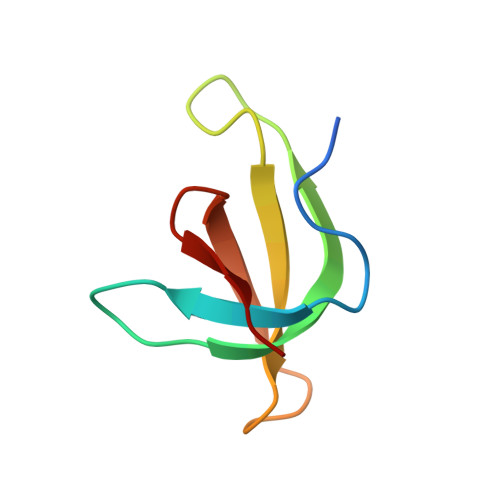Novel crystallization conditions for tandem variant R67 DHFR yield a wild-type crystal structure.
Yachnin, B.J., Colin, D.Y., Volpato, J.P., Ebert, M., Pelletier, J.N., Berghuis, A.M.(2011) Acta Crystallogr Sect F Struct Biol Cryst Commun 67: 1316-1322
- PubMed: 22102224
- DOI: https://doi.org/10.1107/S1744309111030417
- Primary Citation of Related Structures:
3SFM - PubMed Abstract:
Trimethoprim is an antibiotic that targets bacterial dihydrofolate reductase (DHFR). A plasmid-encoded DHFR known as R67 DHFR provides resistance to trimethoprim in bacteria. To better understand the mechanism of this homotetrameric enzyme, a tandem dimer construct was created that linked two monomeric R67 DHFR subunits together and mutated the sequence of residues 66-69 of the first subunit from VQIY to INSF. Using a modified crystallization protocol for this enzyme that included in situ proteolysis using chymotrypsin, the tandem dimer was crystallized and the structure was solved at 1.4 Å resolution. Surprisingly, only wild-type protomers were incorporated into the crystal. Further experiments demonstrated that the variant protomer was selectively degraded by chymotrypsin, although no canonical chymotrypsin cleavage site had been introduced by these mutations.
Organizational Affiliation:
Department of Biochemistry, McGill University, 3649 Promenade Sir William Osler, Bellini Pavilion, Room 470, Montreal, Quebec H3G 0B1, Canada.















